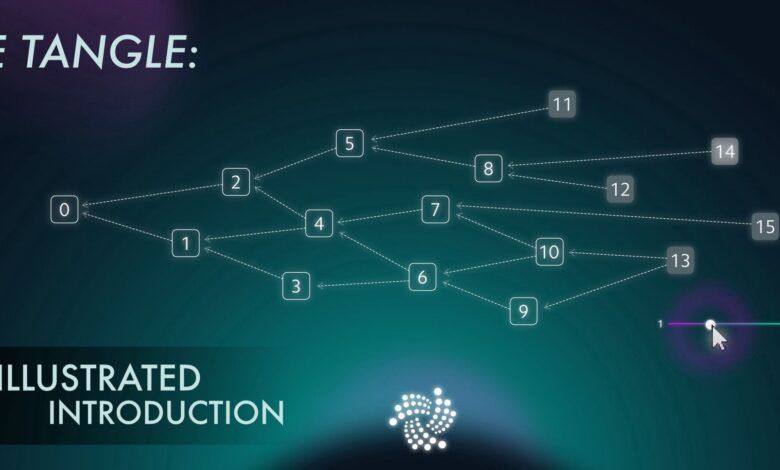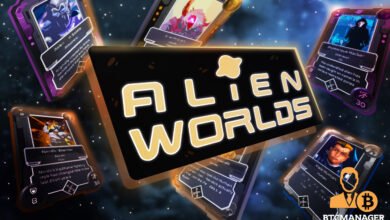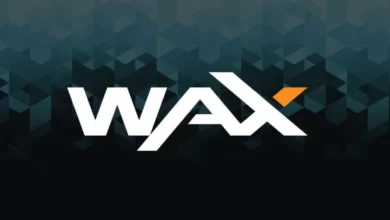IOTA and its Tangle Technology

IOTA is a distributed ledger technology designed to facilitate transactions and data transfers between devices connected to the Internet of Things (IoT). Unlike other cryptocurrencies that rely on blockchain technology, IOTA uses a unique data structure called Tangle to record and verify transactions. In this article, we will explore the benefits of Tangle Technology, how it works, and the various use cases of IOTA.
IOTA vs Blockchain
Blockchain is a decentralized ledger that records transactions in blocks that are linked together to form a chain. Each block contains a set of transactions that are verified by miners who compete to solve complex mathematical puzzles. In contrast, IOTA’s Tangle Technology uses a different approach to achieve consensus without the need for miners.
Difference between Blockchain and Tangle Technology
One of the key differences between blockchain and Tangle Technology is the way transactions are confirmed. In blockchain, miners have to solve complex mathematical problems to validate transactions, which results in a high degree of centralization and energy consumption. Tangle Technology, on the other hand, achieves consensus by requiring each new transaction to confirm two previous transactions. This creates a web-like structure that grows as more transactions are added, ensuring that the network is decentralized and energy-efficient.
Advantages of Tangle Technology over Blockchain
Tangle Technology offers several advantages over traditional blockchain systems. For one, it is more scalable than blockchain, as it can process more transactions per second without compromising security. Additionally, Tangle Technology does not require miners, which reduces the risk of centralization and makes the system more energy-efficient. Finally, Tangle Technology allows for feeless transactions, making it ideal for micropayments and other small transactions that are not economically viable on blockchain.
How Tangle Technology Works
Tangle Technology is a Directed Acyclic Graph (DAG) that consists of interconnected transactions. Each new transaction in the network must approve two previous transactions, creating a web-like structure that grows over time. This means that transactions are not stored in blocks like in blockchain, but rather as a series of interconnected nodes that form a Tangle.
Transaction confirmation
When a user wants to send a transaction, they first need to validate two previous transactions by performing a small amount of proof-of-work. This ensures that the transaction is valid and contributes to the overall security of the network. Once the transaction is confirmed, it is added to the Tangle and becomes a part of the apprroved transaction history. The more transactions that are added to the Tangle, the more secure and decentralized the network becomes.
Consensus
In order for the network to reach consensus on the validity of transactions, nodes in the network need to come to an agreement on the current state of the Tangle. This is achieved through a voting system, where each node in the network verifies the validity of the transactions it approves. If the majority of nodes agree that a transaction is valid, it becomes confirmed and added to the Tangle.
Security
Tangle Technology offers several security features that make it resistant to attacks. The decentralized nature of the network makes it difficult for any one node to manipulate the Tangle or double-spend coins. Additionally, the proof-of-work required to validate transactions ensures that the network is resistant to spam attacks.
Use cases of IOTA
IOTA’s Tangle Technology has several potential use cases, particularly in the IoT and Industry 4.0 space.
IoT and Industry 4.0
With the rise of connected devices and the IoT, there is a growing need for a secure and scalable system for transferring data and value between devices. IOTA’s Tangle Technology offers a feeless and scalable solution for micropayments and data transfers, making it an ideal solution for IoT and Industry 4.0 applications.
Mobility and Transportation
IOTA’s Tangle Technology can also be used in the mobility and transportation space, where it can facilitate secure and frictionless payments for services such as tolls, parking, and charging. Additionally, IOTA’s Tangle Technology can be used to track and verify the ownership of vehicles and other assets, making it a valuable tool for fleet management and logistics.
Supply Chain Management
IOTA’s Tangle Technology can be used to track the movement of goods and verify the authenticity of products in the supply chain. By using IOTA’s feeless and secure system, companies can ensure that their products are not counterfeit and that they are being transported and stored in a safe and efficient manner.
Criticisms and limitations
Despite its potential benefits, IOTA and Tangle Technology have faced criticisms and limitations.
Centralization concerns
Some have raised concerns about the centralization of the IOTA network, particularly with regards to the role of the IOTA Foundation in maintaining and developing the network. While the Foundation has stated that it is committed to decentralization, some have questioned whether this is achievable in practice.
Scalability issues
While Tangle Technology is more scalable than blockchain, it still faces limitations in terms of the number of transactions it can process per second. This could become a bottleneck as the network grows and more transactions are added.
Future of IOTA and Tangle Technology
Despite these challenges, IOTA and Tangle Technology have a bright future ahead. The IOTA Foundation has announced several partnerships and collaborations with companies in various industries, which could help to drive adoption of the technology.
Partnerships and collaborations
IOTA has formed partnerships with companies such as Volkswagen, Bosch, and Fujitsu, among others. These partnerships aim to explore the potential use cases of Tangle Technology in various industries and to develop new applications for the technology.
Integration with other technologies
IOTA’s Tangle Technology can also be integrated with other emerging technologies such as AI and machine learning. This could open up new possibilities for smart contracts and autonomous transactions, further expanding the potential use cases of the technology.



